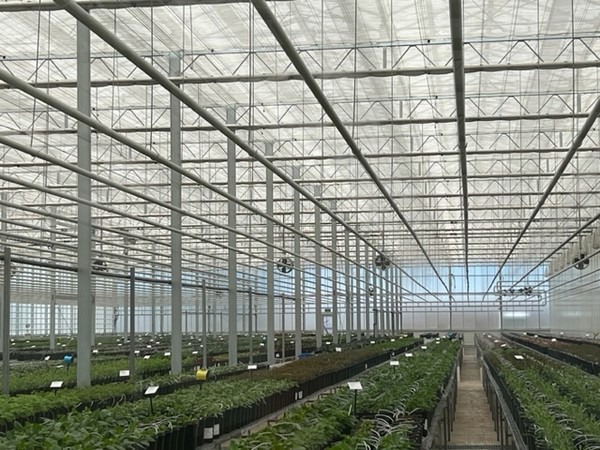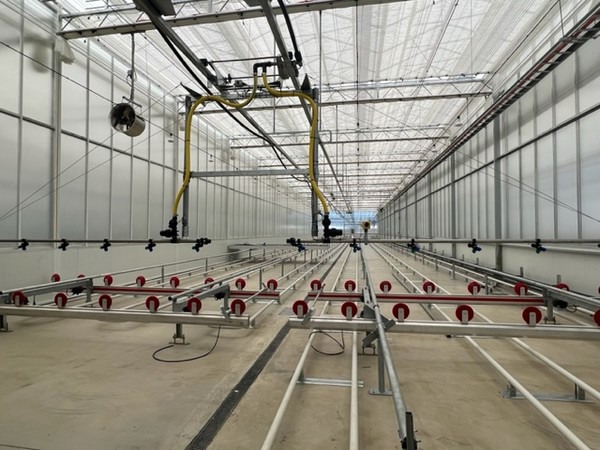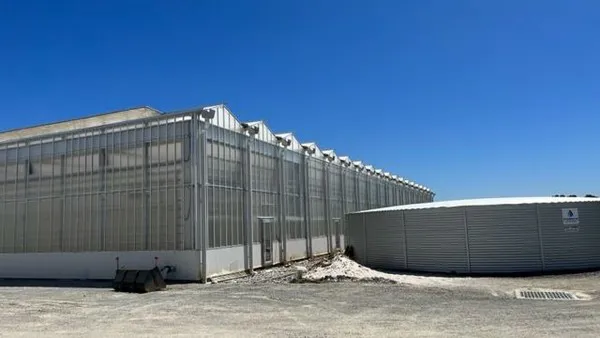Established in 2001, Ball Australia is known for its national distribution of quality seed and vegetative lines for flowers, vegetables, herbs, cut flowers, and tissue culture. The company has the flexibility to supply growers with high-quality plugs all year round. However, with the increasing popularity of new local plant varieties, existing quarantine compartments struggle to allow the company to meet growing demands.
As Ball continues to import international seedlings, it requires the ability to house plants in secure quarantine and semi-quarantine compartments. To achieve this, these compartments require sealed conditions to meet stringent bio-security standards.

Powerplants was engaged in managing the fit-out of a new Venlo greenhouse, specifically designed to increase seedling propagation capacity from international suppliers. The scope included management of the planning and permits for this new structure, electrical power upgrade, design, and construction of rainwater harvesting, connecting the existing irrigation lines to the new facility, and climate control of all internal compartments.
Inside the hectare of Venlo greenhouses, the facility is separated into seven compartments - one blackout, two quarantine zones, and four large growing spaces.

The new facility features toughened glass, two layers of shade and energy screens for each compartment, electrical power upgrades, rainwater tanks, and the integration of existing irrigation lines. The blackout compartment also makes use of full wall and ceiling screens for light blocking. The project incorporates Normist fogging systems, Powerplants circulation fans, PRIVA level and temperature sensors, and KG-supplied heating pipes to ensure consistent, year-round climate conditions. In the two quarantine compartments, Bosman Van Zaal mobile benching covers an impressive 1300 square meters in conjunction with automated booms. The brain behind the operation is the PRIVA system – providing all compartments with fully automated, remotely manageable environments.
Each compartment utilizes independent, purpose-built irrigation manifolds, providing crops with freshwater and up to two recipes. To efficiently grow several plant varieties in the same compartments, Ball required numerous irrigation control points to manage a range of different feeding regimes. While most greenhouses might have 5-10 points over several hectares, Ball’s finished set-up has almost 200 irrigation control points capable of automation.

Powerplants understand the importance of space efficiency, which is why all irrigation lines run into customized in-built trenches. These trenches also serve a secondary purpose - capturing fertigated water run-off underground to be pumped to the adjacent reed bed. This provides natural filtration, feeding clean water back to the local ecosystem.
The project supports long-term labor savings, increased production capabilities, and engages sustainable practices, all while meeting necessary bio-security regulations. Ball Australia’s facility and new automotive systems afford total control over the supply of production and set the company in good stead for continued success in local markets.
For more information: Powerplants
Powerplants
Tel.: 03 8795 7750
sales@powerplants.com.au
www.powerplants.com.au
